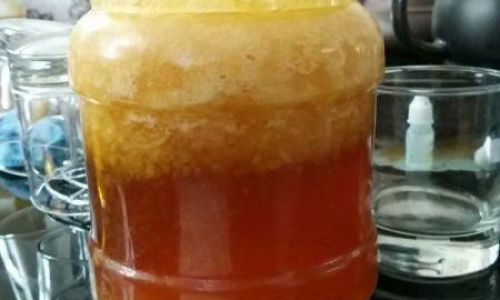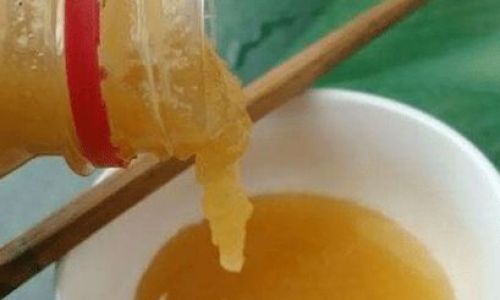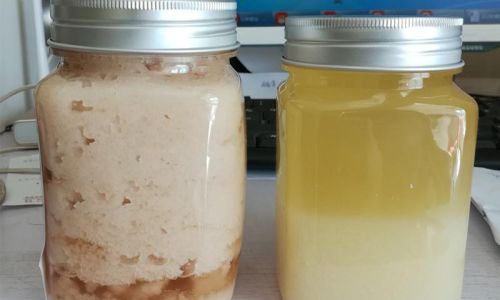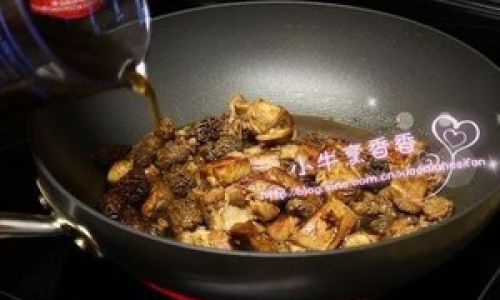Introduction
Honey, often hailed as nature’s sweetener, is renowned for its unique properties and versatility. Its rich, golden hue and smooth, syrupy texture make it a staple in kitchens worldwide. More importantly, honey boasts numerous health benefits, including its natural antioxidants, antibacterial properties, and ability to soothe sore throats. However, like any other food product, honey can undergo changes over time, potentially leading to spoilage. Understanding how to determine if honey has gone bad is crucial for ensuring you consume only the freshest, highest-quality honey. This comprehensive guide will delve into the various signs and methods to identify spoiled honey, exploring its shelf life, storage conditions, and common misconceptions about honey’s durability.
Understanding Honey’s Shelf Life
Before discussing how to detect spoiled honey, it’s essential to understand its remarkable shelf life. Unlike many other foods, honey has an almost indefinite shelf life when stored properly. This is due to its high sugar content, low moisture level, and acidic nature, which create an environment hostile to microorganisms. In ancient times, honey was used as a preservative, and archaeological discoveries have shown that honey found in Egyptian tombs thousands of years old is still edible.
However, while honey may theoretically last forever, practical considerations such as storage conditions and packaging can affect its quality and taste over time. Commercial honey, often pasteurized and filtered, might not retain the same purity and flavor as raw, unprocessed honey. Additionally, improper storage—exposure to heat, moisture, or contaminants—can accelerate the degradation process.
Signs of Spoiled Honey
Identifying spoiled honey involves looking for specific signs and changes in its appearance, texture, and smell. Here are the key indicators:
-
Crystallization

One of the most common changes in honey is crystallization. This process occurs when the glucose in honey precipitates out, forming solid crystals. While crystallization is a natural phenomenon and does not indicate spoilage, it can alter the honey’s texture and appearance. Crystallized honey may look granular or solid, but it can easily be returned to its liquid state by gently heating it in a water bath or microwaving it briefly.
It’s important to note that crystallization can vary depending on the type of honey. Some varieties, such as acacia or clover honey, are less likely to crystallize, while others, like rapeseed or buckwheat honey, crystallize more readily.
-
Granulation and Sugar Formation
Granulation is similar to crystallization but involves larger sugar crystals forming in the honey. This can happen if honey is stored in cool, dry conditions for extended periods. While granulation doesn’t necessarily mean the honey is spoiled, it can affect its texture and mouthfeel. The crystals can be dissolved back into the honey using the same methods as for crystallization.
-
Darkening
Over time, honey may darken in color. This is particularly noticeable in lighter varieties like acacia or alfalfa honey. Darkening is a natural process caused by the breakdown of certain compounds in honey and exposure to light and air. While darkened honey is usually still safe to consume, it may have lost some of its original flavor and aroma.
-
Fermentation
Fermentation is a more serious sign of honey going bad. This occurs when honey contains too much moisture (usually more than 20%) and yeast present in the honey begin to multiply and convert the sugars into alcohol and carbon dioxide. The resulting honey will have a bubbly appearance, a stronger, vinegary smell, and may even taste sour or alcoholic. Fermented honey is not safe to consume and should be discarded immediately.
-
Mold Growth
Although rare, mold can grow on the surface of honey, especially if it has been contaminated with spores or if water has been introduced during storage. Mold growth is a clear indication of spoilage and means the honey should be discarded. It’s worth noting that mold cannot grow within pure honey due to its low moisture content and high sugar levels. Any mold found on honey is likely the result of external contamination.
-
Off Odors and Flavors
Fresh honey has a distinct, sweet aroma and flavor that can vary depending on the floral source. If honey develops an off odor—such as a sour, musty, or moldy smell—or an unpleasant taste, it is a sign of spoilage. These changes are often due to fermentation, contamination, or prolonged exposure to unfavorable conditions.
-
Increased Viscosity

Honey’s viscosity, or thickness, can change over time. While some types of honey naturally have a thicker consistency, an increase in viscosity accompanied by other signs of spoilage (such as darkening or off odors) may indicate that the honey has undergone detrimental changes.
Storage Conditions and Their Impact on Honey
Proper storage is crucial for maintaining honey’s quality and extending its shelf life. Here are some best practices for storing honey:
-
Temperature
Store honey in a cool, dark place. Excessive heat can cause honey to darken and lose its flavor, while fluctuations in temperature can accelerate crystallization. Ideally, keep honey at room temperature or slightly cooler. Avoid storing honey in the refrigerator, as this can make it crystallize more quickly.
-
Light
Protect honey from direct sunlight, which can degrade its color and flavor. Store honey in opaque containers or wrap transparent jars in dark paper or cloth.
-
Moisture
Keep honey containers tightly sealed to prevent moisture from entering. Moisture can promote fermentation and mold growth.
-
Contamination
Use clean utensils when scooping honey to avoid introducing bacteria, yeast, or mold spores. Avoid dipping your finger directly into the jar or double-dipping spoons.
-
Packaging
Choose glass or stainless steel containers for storing honey. Plastic containers can leach chemicals into the honey over time, especially if exposed to heat or sunlight.
Common Misconceptions About Honey’s Durability
Several myths surround honey’s shelf life and storage, leading to confusion about when honey might go bad. Here are some common misconceptions:

-
“Honey Never Goes Bad”
While honey has an exceptionally long shelf life, it can undergo changes that affect its quality and taste. Crystallization, darkening, and fermentation are all natural processes that can occur over time, even in properly stored honey.
-
“Refrigeration Preserves Honey”
Refrigeration is not necessary for storing honey and can actually accelerate crystallization. Keep honey at room temperature in a cool, dark place for best results.
-
“Crystallized Honey is Spoiled”
Crystallization is a natural process that does not indicate spoilage. Crystallized honey can be returned to its liquid state by gentle heating.
-
“Older Honey is Better”
While honey can retain its quality for many years, older honey may have lost some of its original flavor and aroma. For the best taste, consume honey within a few years of purchase, especially if it’s a variety prone to crystallization or darkening.
-
“Honey Can Kill Germs, So It Can’t Go Bad”
Honey’s antibacterial properties are well-documented, but they don’t prevent all forms of spoilage. Yeast and mold spores can survive in honey and cause fermentation or mold growth if conditions are favorable.
Conclusion
Honey is a remarkable substance with a rich history and numerous health benefits. While it has an almost indefinite shelf life when stored properly, it can undergo changes that affect its quality and taste over time. By understanding the signs of spoiled honey—such as crystallization, darkening, fermentation, mold growth, off odors, and flavors—and following best practices for storage, you can ensure that you always have fresh, delicious honey on hand. Remember, proper storage in a cool, dark place with minimal exposure to moisture and contamination is key to preserving honey’s purity and flavor. With a bit of care, your honey can retain its sweetness and health benefits for years to come.





0 comments